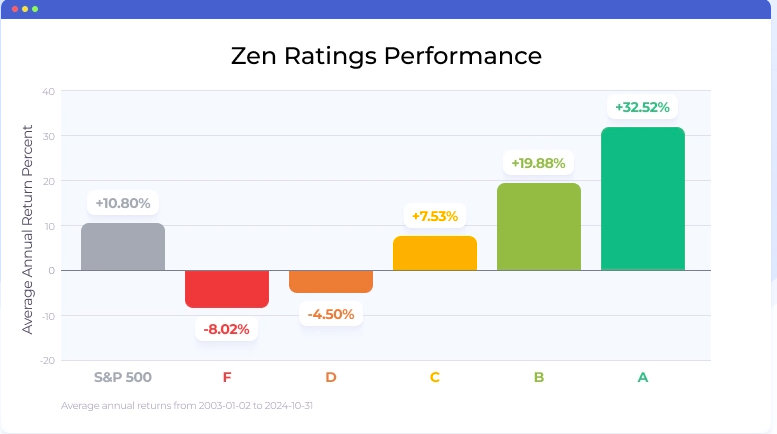Assessing the AI and machine learning (ML) models utilized by stock prediction and trading platforms is crucial to ensure that they provide precise, reliable, and useful insights. Incorrectly designed or overhyped model could result in financial losses as well as flawed forecasts. Here are the top ten suggestions for evaluating the AI/ML models of these platforms:
1. Learn the purpose of the model and its Approach
Clarity of objective: Decide if this model is intended for short-term trading or long-term investment or risk analysis, sentiment analysis, etc.
Algorithm disclosure: Determine if the platform discloses which algorithms it employs (e.g. neural networks and reinforcement learning).
Customizability. Check if the model is able to be modified according to your trading strategy or level of risk tolerance.
2. Evaluation of Model Performance Metrics
Accuracy Verify the accuracy of the model's prediction. Don't rely only on this measure however, as it may be inaccurate.
Recall and precision: Determine how well the model can identify real positives (e.g. accurately predicted price changes) and reduces false positives.
Risk-adjusted return: Examine if the model's predictions result in profitable trades after taking into account risk (e.g., Sharpe ratio, Sortino ratio).
3. Make sure you test the model by using backtesting
Performance history: The model is tested by using data from the past to evaluate its performance under the previous market conditions.
Test the model on data that it hasn't been trained on. This will help to prevent overfitting.
Analysis of scenarios: Evaluate the model's performance under different market conditions.
4. Be sure to check for any overfitting
Overfitting: Watch for models that are able to perform well using training data, but not so well when using data that is not seen.
Regularization: Check whether the platform uses regularization techniques like L1/L2 or dropouts in order to prevent overfitting.
Cross-validation: Make sure that the platform uses cross-validation to determine the generalizability of the model.
5. Examine Feature Engineering
Relevant features: Check if the model uses important features (e.g., price, volume and technical indicators, sentiment data macroeconomic factors, etc.).
Selection of features: Make sure that the platform selects features that are statistically significant. Also, avoid redundant or irrelevant information.
Updates to dynamic features: Determine whether the model is adjusting with time to incorporate new features or changes in market conditions.
6. Evaluate Model Explainability
Interpretability - Ensure that the model offers an explanation (e.g. values of SHAP, feature importance) to support its claims.
Black-box models: Beware of applications that utilize overly complicated models (e.g. deep neural networks) without explanation tools.
User-friendly insights: Find out if the platform provides actionable insights in a form that traders can understand and apply.
7. Assessing Model Adaptability
Market fluctuations: See whether your model is able to adjust to market shifts (e.g. new rules, economic shifts, or black-swan events).
Verify that your system is updating its model regularly by adding new data. This can improve performance.
Feedback loops. Make sure that your model is incorporating the feedback from users as well as real-world scenarios to improve.
8. Check for Bias and Fairness
Data bias: Ensure that the training data is accurate to the market and is free of biases (e.g. excessive representation of particular sectors or time periods).
Model bias: Find out if you can actively monitor and mitigate the biases in the predictions of the model.
Fairness - Check that the model isn't biased in favor of or against specific sector or stocks.
9. The computational efficiency of an Application
Speed: Determine whether a model is able to make predictions in real-time with minimal latency.
Scalability - Make sure that the platform can manage huge datasets, many users and not degrade performance.
Resource usage : Check whether the model has been optimized to use computational resources efficiently (e.g. GPU/TPU).
Review Transparency, Accountability and Other Issues
Model documentation: Ensure that the platform provides detailed documentation regarding the model design, the process of training as well as its drawbacks.
Third-party auditors: Check whether the model has been subject to an independent audit or validation by an independent third party.
Error handling: Verify if the platform has mechanisms to detect and correct mistakes or errors in the model.
Bonus Tips
User reviews and case studies User reviews and case studies: Study feedback from users as well as case studies in order to gauge the model's real-world performance.
Trial period: Test the software for free to determine how accurate it is as well as how simple it is utilize.
Customer Support: Ensure that the platform provides an extensive technical support or model-specific support.
These tips will aid in evaluating the AI models and ML models on platforms that predict stocks. You'll be able to assess if they are transparent and trustworthy. They must also be aligned with your trading objectives. Check out the recommended investing ai recommendations for blog examples including best ai trading software, best ai stock, ai stock, stock ai, chatgpt copyright, ai for investment, chatgpt copyright, ai trading tools, ai trade, best ai trading software and more.

Top 10 Tips To Assess The Speed And Latency Of Ai Platforms For Trading Stocks
Latency and speed are an important factor to consider when evaluating AI stock prediction/analyzing trading platforms. This is particularly true for algorithmic traders, high-frequency traders and active traders. A delay of just milliseconds can affect profitability and trade execution. Here are 10 top tips for measuring the speed of the platform.
1. Data feeds that are real-time: How do you evaluate them
Data delivery speed Make sure the platform is able to deliver real-time data (e.g. sub-millisecond delay).
Data source proximity: Find out whether the server of the platform is situated near major exchanges, which can reduce the time for data transmission.
Data compression - Make sure that the platform uses efficient data compression techniques to speed up data delivery.
2. Check the trade execution speed
Order processing: The platform's ability to execute and process trades swiftly after an order is submitted.
Direct Market Access (DMA) Make sure that your platform supports DMA. This allows orders to be sent directly to the exchange, without the need for intermediaries.
Make sure you have a detailed report on the execution including timestamps and confirmations of the order.
3. Assess Platform Responsiveness
User interface (UI speed) Find out how fast the platform responds to inputs, such as clicking buttons or loading charts.
Chart updates: Make sure you check if charts and visualizations update in real-time without lag.
Mobile app performance If you are you're using a mobile app, ensure it performs as quickly as the desktop version.
4. Verify that the infrastructure is low-latency.
Servers' locations: The platform should use high-speed, low-latency servers that are close to major exchanges or financial hubs.
Co-location: If your platform allows co-location, then you can place your trading algorithm on servers near the exchange.
High-speed networks: Verify that the platform is using fiber-optic high-speed networks, or other low-latency technology.
5. Backtesting and Evaluation of Simulation Speed
Check the speed at which your platform can process and analyze past data.
Simultaneous trade simulation The platform should be capable of simulating trading in real-time without noticeable delay.
Parallel processing: Verify that your platform is using distributed computing or parallel processing to increase the speed of calculations.
6. Estimate API Latency
API response time: Check how fast the platform's API responds to requests (e.g., fetching market information, or placing orders).
Limits on rates. Verify the API's rate limits in order to avoid any delays when high-frequency trading.
WebSocket Support: Check whether the platform supports WebSocket protocols to stream data in real time and with low latency.
7. Test Platform Stability under Load
High volume trading scenarios: Test the platform's stability and responsiveness by simulating trading scenarios.
Market volatility Test the platform in periods of high market volatility to make sure that it can handle sudden price changes.
Stress testing: Find out whether the platform provides tools to test your strategies in extreme conditions.
8. Review Connectivity and Network
Internet speed requirements: Make sure your internet connection is running at the recommended speed for your platform.
Check for redundant connections.
VPN latency - If you use the VPN for connection, be sure that it doesn't cause significant latency. Make sure that the provider offers alternative options.
9. Check for speed optimization features
Pre-trade Analyses: Ensure whether the platform offers pre-trade analysis to improve execution speed and order processing.
Smart order route (SOR) You can check to see if SOR is utilized by the platform to determine the most speedy and cost-effective execution venues.
Monitoring latency: Find out whether your platform comes with tools that allow you to analyse and monitor latency in real time.
Benchmarks for User Feedback Review
Reviews from users: Perform user research to evaluate the platform's performance in terms of latency and speed.
Third-party Benchmarks: Discover independent benchmarks that evaluate the speed of a platform to its rivals.
Testimonials and case studies: Find out if there are any case studies that demonstrate the low-latency capabilities of the platform.
Bonus Tips:
Trial period: Use an unpaid trial or demo to evaluate the platform's performance and latency in actual situations.
Customer support: Make sure the platform provides customer support to optimize latency and other issues.
Hardware requirements: Verify whether the platform needs specific hardware (e.g. high-performance PCs) to achieve optimal speed.
If you follow these guidelines that you will be able to assess the speed and latency of AI platform for predicting or analyzing stocks, ensuring you choose the best platform for your trading needs and minimizes delays. Low latency is crucial for algorithmic and high-frequency traders. Even minor delays can have a huge impact on the profitability. Have a look at the best stock predictor info for website tips including can ai predict stock market, ai in stock market, stock trading ai, ai stock trader, trading ai tool, ai stock price prediction, ai stock prediction, ai software stocks, ai options, investing with ai and more.
